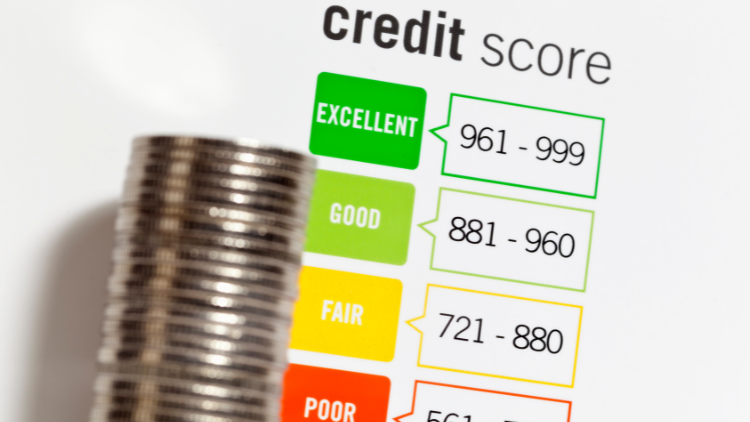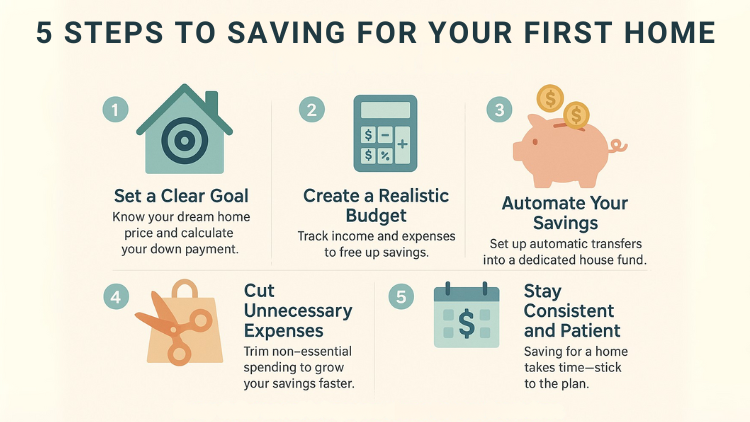For millions of people, the dream of owning a home feels more distant than ever. You see the headlines about rising prices and hear the advice to “just save up 20%,” a number that can feel like an impossible mountain to climb.
It’s easy to feel discouraged and relegate the idea of homeownership to a “someday” dream.

Because a dream without a plan is just a wish.
Saving for a down payment is not an impossible task. It’s a marathon that requires a realistic plan, discipline, and a series of smart, strategic steps. This guide will provide that plan.
We’ll break down the entire process into a manageable playbook to take you from a vague dream to a tangible down payment in your bank account.
Step 1: Define Your Target (How Much Do You Actually Need?)
First, let’s debunk a major myth: you do not always need a 20% down payment. While a 20% down payment allows you to avoid Private Mortgage Insurance (PMI), many successful first-time buyers put down far less.
- Loan Options: Programs like FHA loans require as little as 3.5% down, and some conventional loans allow as little as 3% down for qualified buyers.
- Don’t Forget Closing Costs: These are the fees you pay to finalize the mortgage, typically running 2% to 5% of the home’s purchase price. This is a separate cash expense you must plan for.

Your Action Plan:
- Research realistic home prices in the neighborhoods you’re interested in.
- Set a concrete goal. Let’s say you’re looking at a $300,000 home. A 5% down payment ($15,000) plus an estimated 3% for closing costs ($9,000) gives you a tangible savings target of $24,000. Now you have a destination for your map.
Step 2: Check Your Most Important Number: Your Credit Score
Before you save your first dollar, you need to know your credit score. Your score is one of the most critical factors in getting approved for a mortgage and determines the interest rate you’ll pay. A higher score can save you tens of thousands of dollars over the life of your loan.
Your Action Plan:
- Check Your Score & Reports: Get your free credit reports from the official source, AnnualCreditReport.com, and check your score for free through your bank or credit card provider.
- Make a Plan to Improve: For the first 6-12 months of your savings journey, make improving your credit a top priority. As this guide from Consumer Financial Protection Bureau (CFPB) explains, the two most important actions are paying every single bill on time and keeping your credit card balances low (well under the 30% utilization rule).

Step 3: Create a “Down Payment” Budget
To save a significant amount of money, you need to create a gap between what you earn and what you spend.
Your Action Plan:
- Track Your Spending: For one month, track every dollar to see where your money is really going.
- Adopt a Framework: Use a simple spending plan like the 50/30/20 rule (50% Needs, 30% Wants, 20% Savings).
- Be Aggressive: Your “Savings” bucket is now your “Down Payment Fund.” Scrutinize your “Wants” category. Every dollar you cut from dining out, subscriptions, or shopping is another dollar you can redirect toward your down payment.
Step 4: Open the Right Savings Account
Your down payment fund needs a specific home. It must be safe from market fluctuations and separate from your daily checking account.
Your Action Plan:
- Open a High-Yield Savings Account (HYSA): An HYSA is the perfect vehicle for a 1-to-5-year savings goal. It’s FDIC-insured (meaning your money is protected up to $250,000), it’s liquid so you can access it when you need it, and it earns a much higher interest rate than a traditional savings account.

Step 5: Automate and Supercharge Your Savings
Willpower is unreliable. Automation is your best friend on this journey.
Your Action Plan:
- Set Up Automatic Transfers: Schedule an automatic transfer from your checking account to your HYSA for every payday. This “pay yourself first” method ensures your savings goal is prioritized.
- The “Windfall” Rule: Commit right now that any unexpected money you receive—a tax refund, a work bonus, a raise—will go directly into your down payment fund. This can dramatically shorten your timeline.
- Consider a Side Hustle: Even a few hours a week driving for a rideshare service, freelancing, or pet-sitting can add hundreds of extra dollars a month. Dedicate 100% of this extra income to your savings.
Step 6: Stay Patient and Be Consistent
Saving for a down payment is a marathon, not a sprint. It requires focus and discipline, but it is far from impossible.
Every dollar you intentionally set aside isn’t a sacrifice; it’s a direct investment in your future stability, your future wealth, and your dream of turning a key in a door that is finally yours.
Frequently Asked Questions (FAQ)
What’s PMI and why should I try to avoid it?
Private Mortgage Insurance (PMI) is an extra insurance policy you have to pay for if you put down less than 20% on a conventional loan. It protects the lender—not you—in case you default. It’s typically rolled into your monthly mortgage payment and can be a significant extra cost.
Are there any first-time homebuyer programs I should know about?
Yes! This is a critical area to research. Many state and local governments offer down payment assistance programs, grants, and special loans for first-time buyers. A great place to start your research is the U.S. Department of Housing and Urban Development (HUD) website for your state.
Should I stop investing for retirement to save for a down payment?
This is a tough personal finance decision. The general advice is to never stop contributing enough to your 401(k) to get the full employer match (that’s free money). Beyond that, pausing other investments for a short, defined period (1-2 years) to aggressively save for a down payment can make sense for many people, but it’s a personal choice based on your goals and timeline.
WalletAware shares education, not individualized financial advice. Always confirm current terms on the issuer’s site before applying.